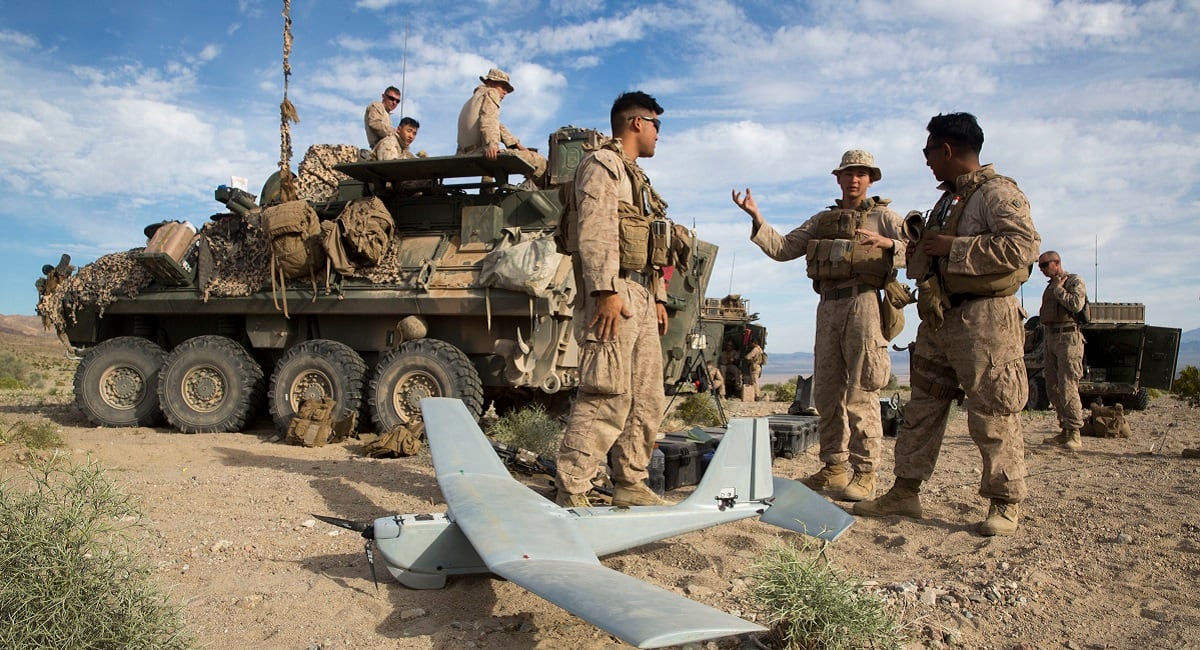The Corps wants to put the power of a swarm of suicide drones, also known as loitering munitions, in the hands of one Marine.
It’s a plan to help boost lethality and independence of front-line troops operating in austere locations outside the striking range of manned aircraft.
The thought is to get a single operator to control up to 15 suicide drones with “minimal operator burden,” Capt. Matt Cornachio, a fires project officer with Marine Corps Warfighting Laboratory, said during a media roundtable Thursday. And so far, the Corps has successfully tested a single operator controlling six drones at once.
The loitering munitions will come with a mix of capabilities, from drones packing lethal warheads to take out enemy troops or vehicles, to an electronic attack payload to jam enemy communications and air defense.
The single Marine piloting the drones would in effect become his own close-air support and electronic warfare operator.
The Corps already is amid plans to equip its RQ-21 Blackjack drone with the Intrepid Tiger II counter radar capability payload, according to the Corps’ 2018 aviation plan.
The capability would greatly expand the independence of Marines operating across the vastness of the Pacific, which will see Marines operating in decentralized locations on remote island bases or floating barges.
RELATED

It’s a fighting concept known as Expeditionary Advanced Base Operations being pushed by the Corps.
To survive in this fighting environment, the Corps will need to be mobile, fast and light if it wants to avoid the onslaught of high-tech Chinese ballistic missiles and sophisticated electronic attacks.
That also means that at times small bands of Marines may not always be in striking range of manned U.S. aircraft, or even dominate the airspace in which they are operating.
But to work, the swarming suicide drones will need to be easy to operate to keep Marines focused on the battlefield and not glued to a tablet screen.
To ease operations, the Corps wants its future loitering munitions to come with automatic target recognition capability.
It’s about “having the machines do the work for you,” Cornachio said.
The Corps is already in the middle of testing its suicide drone swarming capability.
In late July, the Corps wrapped up an endurance test of one of its drones, pushing a group two unmanned aircraft at almost two hours of flight, according to Cornachio.
“It is not out of the realm of possible to think these things can be in the air for three up to four hours,” he said.
The suicide drones will have a mix of launch capabilities from packable pneumatic tube launch to vehicle borne systems.
In April, the Corps submitted a request for information for a pneumatic launched suicide drone capable of two hours of flight that could potentially fly 60 km.
Shawn Snow is the senior reporter for Marine Corps Times and a Marine Corps veteran.





